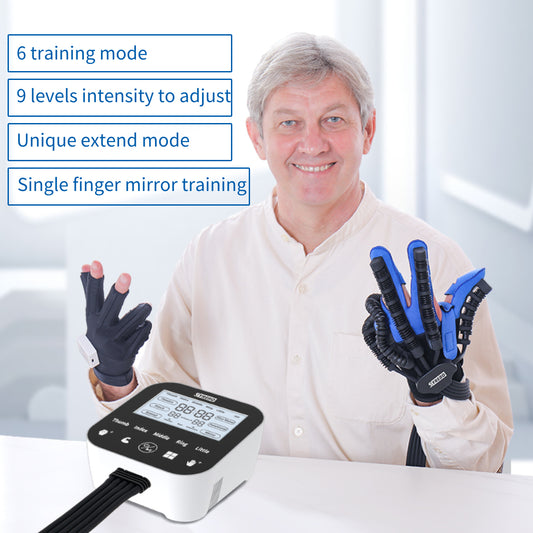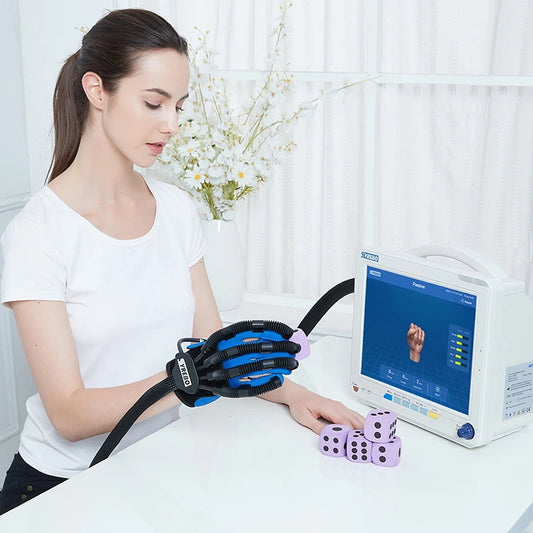Hemiplegia vs Hemiparesis | Symptoms, Causes, Treatment
What are hemiplegia and hemiparesis?
Hemiparesis Definition
The word "hemi" in hemiplegia indicates that it occurs on one half of the body—the left or right side. Hemiplegia is a weakness of one half of the body. This can manifest itself in a number of ways, such as loss of motor control, inability to feel one side of the body, or generalized sensory weakness.
Hemiplegia Definition
Hemiplegia indicates weakness on one side of the body, while hemiparesis indicates partial or complete paralysis of the body. Since paralysis is an extreme form of weakness and neurological dysfunction, hemiplegia may be considered an extreme form of hemiparesis.
Hemiplegia should not be confused with paraplegia, which affects the lower half of the body. However, the causes of hemiplegia and paraplegia are often similar.
What is the difference between hemiparesis and hemiplegia?
Hemiparesis is a slight weakness in the legs, arms, or face, such as a slight loss of strength. It may also be paralyzed on one side of the body.
Hemiplegia is a severe or complete loss of strength or paralysis on one side of the body.
What can cause hemiplegia and hemiparesis?
Hemiplegia and hemiparesis are usually caused by a stroke. A stroke occurs when there is a blockage or bleeding in the brain that affects blood flow to one side of the brain, resulting in hemiparesis and/or hemiplegia on one side of the body.
If the injury is extensive and complex, the result is likely to be hemiplegia (paralysis), while if the injury is less severe, hemiparesis (muscle weakness) may occur. The symptoms of hemiplegia and hemiparesis usually depend on the location and severity of the stroke.
The underlying cause of hemiplegia and hemiparesis is the same: impaired communication between the brain and muscles. Our brain controls how the body moves. Therefore, when a stroke occurs, the consequence is a disruption in nerve connections, blood flow, and oxygen between the brain and muscles. Many times, this leads to muscle weakness and potential paralysis of the body.
Other causes of hemiplegia and hemiparesis include the following:
- Brain infections (such as meningitis and encephalitis)
- Trauma to the brain or spinal cord
- Cerebral paralysis
- Brain tumors
- Spina bifida
- Multiple sclerosis
- Polio
- Muscular dystrophy
What are the symptoms of hemiplegia and hemiparesis?
Symptoms of hemoparesis
Hemiparesis usually affects one side of the body unevenly. Hemiparesis is a continuum of disorders with symptoms ranging from mild and episodic to widespread and severe. Obvious symptoms include
- Difficulty with motor skills, especially standing.
- Widespread weakness on one side of the body. For example, a patient may be unable to lift an arm.
- Thrust Syndrome: Thrust syndrome is a common byproduct of traumatic brain injury and causes hemiparesis patients to shift their center of gravity to the affected side, which weakens motor skills, makes walking difficult, and may cause pain. Doctors use a scale to assess the severity of pushing syndrome. In addition to determining the cause of symptoms, the scale helps doctors make an accurate prognosis.
- Stress on the unaffected side of the body, which may overcompensate for damage to the hemiparesis side.
- Abnormal sensations or tingling on the affected side.
It is important that your doctor check the affected side for injuries to rule out other causes such as nerve compression, muscle strain, or decreased blood flow.
Symptoms of hemiplegia
Paralysis changes over time, and not all people with hemiplegia experience complete loss of mobility or total loss of consciousness on the affected side. However, if the paralysis is not extensive, a doctor will likely diagnose hemiplegia rather than hemiplegia. The symptoms of hemiplegia include
- Difficulty or inability to move one side of the body
- Difficulty with bowel or bladder control.
- Change or loss of sensation on one side of the body.
- Making a fist with one hand.
- Difficulty swallowing or speaking.
- Difficulty breathing.
- Hemiplegia changes over time, so some parts of the affected side may be more severely affected than others.
What are the treatments for hemiplegia and hemiparesis?
How is hemiplegia treated?
Treatment for hemiplegia depends on the underlying cause. Some conditions can be treated or even cured. Other conditions may get better on their own. Unfortunately, many hemiplegias cause permanent damage to the nervous system, such as spinal cord injury or traumatic brain injury. In these cases, hemiplegia will not go away, but there may be some degree of improvement.
Because there are so many different ways to treat hemiplegia, a healthcare provider is in the best position to talk to you in detail about possible treatments for your condition. They can provide information based on your specific condition, environment, health history, and more.
What can I do at home to treat hemiplegia?
Hemiplegia is a major symptom of stroke and is a life-threatening emergency. Therefore, you should not attempt to self-diagnose or self-treat.
However, hemiplegia may be temporary, such as a migraine headache, or permanent due to other, non-life-threatening causes. In both cases, talk to your healthcare provider about your condition and its symptoms. They will tell you when hemiplegia is a sign that you need immediate medical attention.
Is rehabilitation and exercise useful in treating hemiplegia?
If hemiplegia is not temporary, healthcare providers often recommend that patients undergo rehabilitation along with other treatments. Rehabilitation can take place in a hospital (inpatient rehabilitation), a clinic or office (outpatient rehabilitation), or at home. Rehabilitation typically includes:
- Physical therapy focuses on leg function, standing, walking, and balance.
- Occupational therapy focuses on arm and hand function and other activities of daily life.
- Prescription of equipment to enhance safety and the ability to function inside and outside of your home.
- Managing symptoms associated with hemiplegia, such as spasticity and depression.
- Guidance and resources to address the consequences of hemiplegia, for example, returning to work or applying for disability benefits.
- There’s ample evidence that exercise helps optimize health and the ability to function after hemiplegia. Exercising may be more challenging with hemiplegia. This is why rehabilitation therapists usually develop exercise programs adapted to a person’s needs and abilities.
How Can Hemiparesis and Hemiplegia Affect Your Daily Life?
Muscle weakness and paralysis can affect your daily activities, which can be frustrating. Hemiparesis and hemiplegia may affect your ability to care for yourself, such as by bathing or showering, dressing, and using the toilet. These activities may take longer to complete, and you may need to seek help from a care partner.
It takes more energy to complete some activities than it did before the stroke. However, due to hemiplegia and paraplegia, there are some activities you may no longer be able to do at all. Discuss stroke recovery needs and wishes with your care partner. They can help you with activities of daily living.
Complications of Living With Hemiparesis and Hemiplegia
Secondary hemiplegia and hemiplegia are problems that can occur as a result of physical weakness. Sometimes, these problems do not show up right away. Instead, these problems may appear months after you first notice weakness or paralysis.
Some complications of hemiplegia and hemiparesis include:
- Bladder problems, such as not being able to completely empty your bladder when urinating or urinating unintentionally (incontinence),
- Problems with bowel control
- Pain
- Deep vein thrombosis (DVT), where a blood clot blocks a large vein
- Autonomic dysreflexia, which is a sudden spike in blood pressure
- Depression
- Breathing problems
- Heart disease
- Sepsis, an infection in the blood
- Pressure wounds (also known as bedsores or pressure sores), i.e., skin ulcers that develop while lying in bed
- Muscle tightness, stiffness, and lack of flexibility
- Muscle atrophy (weakness)
How is hemiplegia diagnosed?
Hemiplegia is often diagnosed after reviewing the individual’s past medical history and performing a detailed neurological examination assessing sensory and motor functions.
Additional tests can be conducted in order to determine the underlying cause of hemiplegia. Blood tests, including a complete blood count (CBC), erythrocyte sedimentation rate (ESR), and coagulation tests (e.g., PT, aPTT), can help eliminate various underlying causes, such as infections or malignancies. Imaging, including magnetic resonance imaging (MRI) and computerized tomography (CT) scans of the head, is necessary in order to exclude most pathologies, including strokes, aneurysms, brain tumors, multiple sclerosis, and injuries. Lastly, electroencephalography (EEG), which measures the electrical activity of the brain, can be used for diagnostic purposes (e.g., to reveal the part(s) of the brain from which seizures originate).







